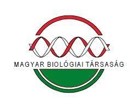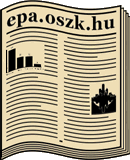Preliminary results on the effects of Canadian goldenrod (Solidago canadensis L.) invasion on biological soil quality in an urban meadow
Abstract
Healthy soil is vital to all terrestrial ecosystems, providing a habitat for a wide range of organisms whose activities ensure the continuity of the nutrient cycle. In addition to classical physical, chemical, and microbiological parameters, indicators based on soil arthropods are simple and cost-effective alternatives for assessing soil condition. In our study, we investigated the effects of Canadian goldenrod invasion on soils using arthropod-based soil quality indices. To collect soil arthropods, soil samples were taken in springs (May) over two years from invaded and non-invaded plots in the Felsőrákos Meadows Nature Reserve (Budapest, Hungary). After extraction, the arthropods were sorted into larger groups. As background variables, local (basic soil physical and chemical parameters) and landscape properties were also measured. None of the quality indices showed significant differences between the soils of the invaded and control plots. However, there were significant differences in the taxonomic composition of soil arthropod assemblages, while the functional community structure was separated by the two study years, regardless of habitat vegetation. The main drivers of biological soil quality were soil moisture and the proportion of woody habitats, both had positive effects. In conclusion, based on the spring data, the goldenrod invasion had no detectable effect on biological soil quality, although it significantly affected the taxonomic composition of soil arthropod communities. However, to get a more accurate picture, additional seasonal data are needed, taking into account the temporal variation in goldenrod phenology.
References
BACHELIER G. 1963. La vie animale dans les sols. O.R.S.T.O.M., Paris. 280 pp.
BAER S. & BIRGÉ H. 2018. Soil ecosystem services: an overview. In: REICOSKY D. (ed.): Managing soil health for sustainable agriculture. Volume 1: Fundamentals. USDA-ARS and University of Minnesota, USA, pp. 17–38.
BARDGETT R., YEATES G. & ANDERSON J. 2005. Patterns and determinants of soil biological diversity. In: BARDGETT R., USHER M. & HOPKINS D. (eds.): Biological Diversity and Function in Soils. Cambridge University Press, pp. 100–118.
BOTTA-DUKAT Z. & DANCZA I. 2008. Giant and Canadian goldenrod (Solidago gigantea Ait., S. ca-nadensis L.). In: BOTTA-DUKAT L. & BALOGH L. (eds.): The most important invasive plants in Hungary. Institute of Ecology and Botany, Hungarian Academy of Sciences, pp. 167–177.
BÜNEMANN E.K., BONGIORNO G., BAI Z., CREAMER R.E., DE DEYN G., DE GOEDE R., FLESKENS L., GEISSEN V., KUYPER T.W., MÄDER P., PULLEMAN M., SUKKEL W., VAN GROENIGEN J.W. & BRUSSAARD L. 2018. Soil quality – A critical review. Soil Biology and Biochemistry, 120: 105–125. https://doi.org/10.1016/j.soilbio.2018.01.030
CHIKOSKI J. M., FERGUSON S. H. & MEYER L. 2006. Effects of water addition on soil arthropods and soil characteristics in a precipitation-limited environment. Acta Oecologica, 30(2): 203–211. https://doi.org/10.1016/j.actao.2006.04.005
CSISZÁR Á. (szerk.) 2012. Inváziós növényfajok Magyarországon. Nyugat-magyarországi Egyetem, Sopron, 364 pp.
DE DEYN G.B. & KOOISTRA L. 2021. The role of soils in habitat creation, maintenance and restoration. Philosophical Transactions of the Royal Society B: Biological Sciences, 376(1834): 20200170. https://doi.org/10.1098/rstb.2020.0170
DORAN J.W. & ZEISS M.R. 2000. Soil health and sustainability: managing the biotic component of soil quality. Applied Soil Ecology, 15(1): 3–11. https://doi.org/10.1016/S0929-1393(00)00067-6
ECKBERG J.N., HUBBARD A., SCHWARZ E.T., SMITH E.T. & SANDERS N.J. 2023. The dominant plant species Solidago canadensis structures multiple trophic levels in an old-field ecosystem. Ecosphere, 14(1): 4393. https://doi.org/10.1002/ecs2.4393
FISCHER C., GERSTMEIER R. & WAGNER T.C. 2022. Seasonal and temporal patterns of rainfall shape arthropod community composition and multi-trophic interactions in an arid environment. Scientific Reports, 12(1): 3742. https://doi.org/10.1038/s41598-022-07716-0
FŐKERT 2024. Felsőrákosi-rétek Természetvédelmi Terület.
http://www.fokert.hu/termeszetvedelmiterulet/_110/ (utolsó megtekintés: 2024. jan. 24.)
GULVIK M. 2007. Mites (Acari) as indicators of soil biodiversity and land use monitoring: a review. Polish Journal of Ecology, 55(3): 415–440.
HU Z., LI J., SHI K., REN G., DAI Z., SUN J., ZHENG X., ZHOU Y., ZHANG J., LI G. & DU D. 2021. Effects of Canada goldenrod invasion on soil extracellular enzyme activities and ecoenzymatic stoi-chiometry. Sustainability, 13(7): 3768. https://doi.org/10.3390/su13073768
KAJZER-BONK J., SZPIŁYK D. & WOYCIECHOWSKI M. 2016. Invasive goldenrods affect abundance and diversity of grassland ant communities (Hymenoptera: Formicidae). Journal of Insect Conservation, 20(1): 99–105. https://doi.org/10.1007/s10841-016-9843-4
KARDOL P., REYNOLDS W., NORBY R. & CLASSEN A. 2011. Climate change effects on soil mic-roarthropod abundance and community structure. Applied Soil Ecology, 47: 37–44. https://doi.org/10.1016/j.apsoil.2010.11.001
LITT A.R., CORD E.E., FULBRIGHT T.E. & SCHUSTER G.L. 2014. Effects of invasive plants on arthro-pods. Conservation Biology, 28(6): 1532–1549. https://doi.org/10.1111/cobi.12350
MANTONI C., PELLEGRINI M., DAPPORTO L., DEL GALLO M., PACE L., SILVERI D. & FATTORINI S. 2021. Comparison of soil biology quality in organically and conventionally managed agro-ecosystems using microarthropods. Agriculture, 11(10): 1022.
https://doi.org/10.3390/agriculture11101022
MARTINEZ M., GUTIÉRREZ-ROMERO V., JANNSENS M. & ORTEGA-BLU R. 2010. Biological soil quality indicators: a review. Current Research, Technology and Education Topics in Applied Microbiology and Microbial Biotechnology, 319–328.
MELONI F., F. CIVIETA B., A. ZARAGOZA J., LOURDES MORAZA M. & BAUTISTA S. 2020. Vegetation pattern modulates ground arthropod diversity in semi-arid Mediterranean steppes. Insects, 11(1): 59. https://doi.org/10.3390/insects11010059
MENTA C., CONTI F. D., PINTO S. & BODINI A. 2018. Soil Biological Quality index (QBS-ar): 15 years of application at global scale. Ecological Indicators, 85: 773–780.
https://doi.org/10.1016/j.ecolind.2017.11.030
MENTA C. & REMELLI S. 2020. Soil health and arthropods: from complex system to worthwhile inves-tigation. Insects, 11(1): 54. https://doi.org/10.3390/insects11010054
MONTANARELLA L. 2007. Trends in land degradation in Europe. In: SIVAKUMAR M.V.K. & NDI-ANG’UI N. (eds): Climate and land degradation. Environmental science and engineering. Springer, Berlin, Heidelberg, pp. 83–104.
MSZ-08-0210:1977. A talaj szerves széntartalmának meghatározása, Magyar Szabvány.
MSZ-08-0205:1978. A talaj egyes kémiai tulajdonságainak vizsgálata. Általános előírások. A talajminta előkészítése. Magyar Szabvány.
MSZ-08-0206-2:1978. A talaj egyes kémiai tulajdonságainak vizsgálata. Laboratóriumi vizsgálatok.
MSZ 20135:1999. A talaj oldható tápelemtartalmának meghatározása. Magyar Szabványügyi Testület, Budapest.
NASA, NATIONAL AERONAUTICS AND SPACE ADMINISTRATION 2023. Prediction of Worldwide Energy Resource (POWER) Project. https://power.larc.nasa.gov/data-access-viewer (utolsó megtekintés: 2023. nov. 14.)
PARISI V., MENTA C., GARDI C., JACOMINI C. & MOZZANICA E. 2005. Microarthropod communities as a tool to assess soil quality and biodiversity: a new approach in Italy. Agriculture, Ecosystems & Environment, 105(1–2): 323–333. https://doi.org/10.1016/j.agee.2004.02.002
PRATHER R.M., CASTILLIONI K., WELTI E.A.R., KASPARI M. & SOUZA L. 2020. Abiotic factors and plant biomass, not plant diversity, strongly shape grassland arthropods under drought conditions. Ecology, 101(6): e03033. https://doi.org/10.1002/ecy.3033
RICOTTA C. & PODANI J. 2017. On some properties of the Bray-Curtis dissimilarity and their ecological meaning. Ecological Complexity 31: 201–205.
https://doi.org/10.1016/j.ecocom.2017.07.003
RUPPERT E.E., FOX R.S. & BARNES R.D. 2004. Invertebrate zoology: a functional evolutionary approach. Belmont, CA: Thomson-Brooks/Cole, 1018 pp.
STERZYŃSKA M., SHRUBOVYCH J. & NICIA P. 2017. Impact of plant invasion (Solidago gigantea L. [sic]) on soil mesofauna in a riparian wet meadows. Pedobiologia, 64: 1–7.
https://doi.org/10.1016/j.pedobi.2017.07.004
USTINOVA E.N., SCHEPETOV D.M., LYSENKOV S.N. & TIUNOV A.V. 2021. Soil arthropod communiti-es are not affected by invasive Solidago gigantea Aiton (Asteraceae), based on morphology and me-tabarcoding analyses. Soil Biology and Biochemistry, 159: 108288. https://doi.org/10.1016/j.soilbio.2021.108288
VÉGH L. 2012. Protecting green spaces: Identifying areas for protection in Felsőrákos meadows (Bu-dapest, Hungary) through habitat mapping. 87 pp.
WAGG C., BENDER S.F., WIDMER F. & VAN DER HEIJDEN M.G.A. 2014. Soil biodiversity and soil community composition determine ecosystem multifunctionality. Proceedings of the National Academy of Sciences of the United States of America, 111(14): 5266–5270.
https://doi.org/10.1073/pnas.1320054111
WEIDENHAMER J.D. & CALLAWAY R.M. 2010. Direct and indirect effects of invasive plants on soil chemistry and ecosystem function. Journal of Chemical Ecology, 36(1): 59–69. https://doi.org/10.1007/s10886-009-9735-0
XU S., LI K., LI G., HU Z., ZHANG J., IQBAL B. & DU D. 2022. Canada Goldenrod Invasion Regulates the Effects of Soil Moisture on Soil Respiration. International Journal of Environmental Research and Public Health, 19(23): 15446. https://doi.org/10.3390/ijerph192315446
YAN S., SINGH A. N., FU S., LIAO C., WANG S., LI Y., CUI Y. & HU L. 2012. A soil fauna index for assessing soil quality. Soil Biology and Biochemistry, 47: 158–165.
https://doi.org/10.1016/j.soilbio.2011.11.014
YE X.Q., YAN Y.N., WU M. & YU F. 2019. High capacity of nutrient accumulation by invasive Soli-dago canadensis in a coastal grassland. Frontiers in Plant Science, 10: 575. https://doi.org/10.3389/fpls.2019.00575
ZHANG C.B., WANG J., QIAN B.Y. & LI W.H. 2009. Effects of the invader Solidago canadensis on soil properties. Applied Soil Ecology, 43(2): 163–169. https://doi.org/10.1016/j.apsoil.2009.07.001
ZHANG S., ZHU W., WANG B., TANG J. & CHEN X. 2011. Secondary metabolites from the invasive Solidago canadensis L. accumulation in soil and contribution to inhibition of soil pathogen Pythium ultimum. Applied Soil Ecology, 48(3): 280–286. https://doi.org/10.1016/j.apsoil.2011.04.011
ZHU X., LI W., SHAO H. & TANG S. 2022. Selected aspects of invasive Solidago canadensis with an emphasis on its allelopathic abilities: A review. Chemistry & Biodiversity, 19(10): e202200728. https://doi.org/10.1002/cbdv.202200728







